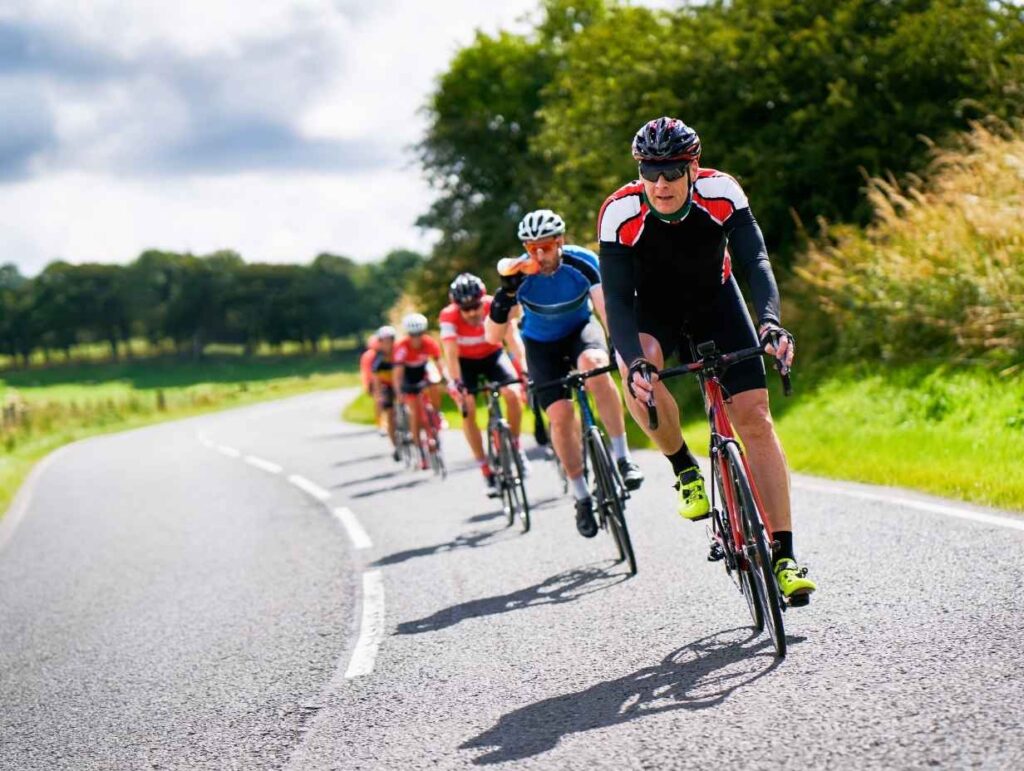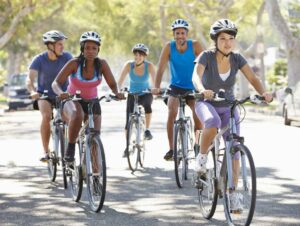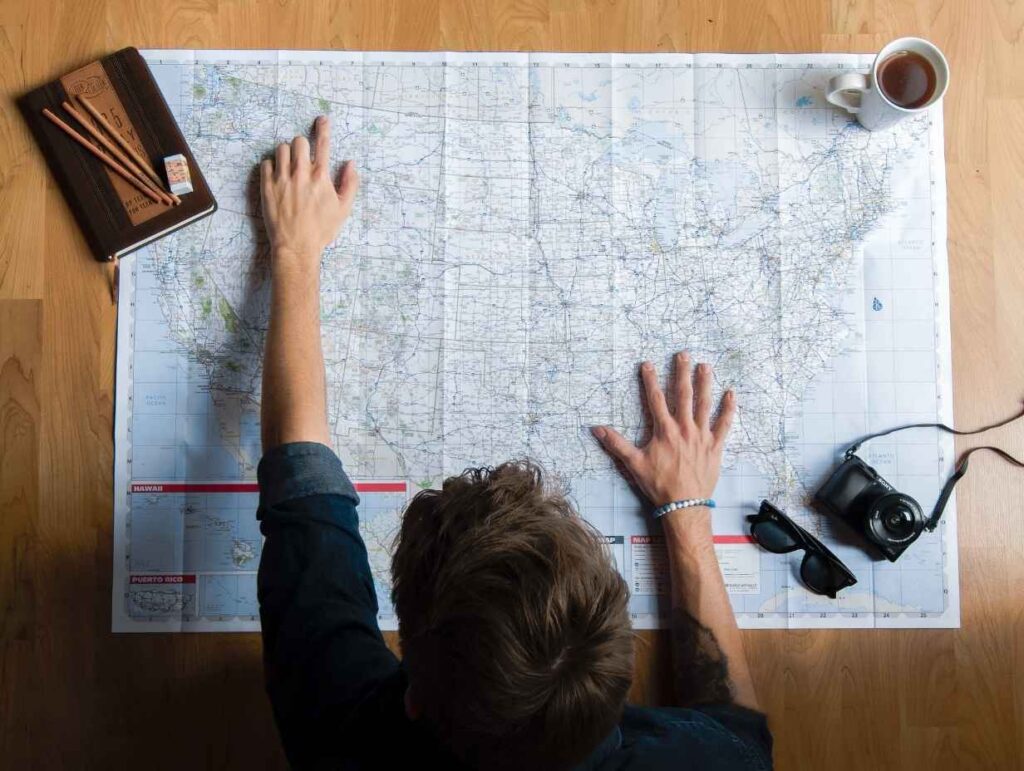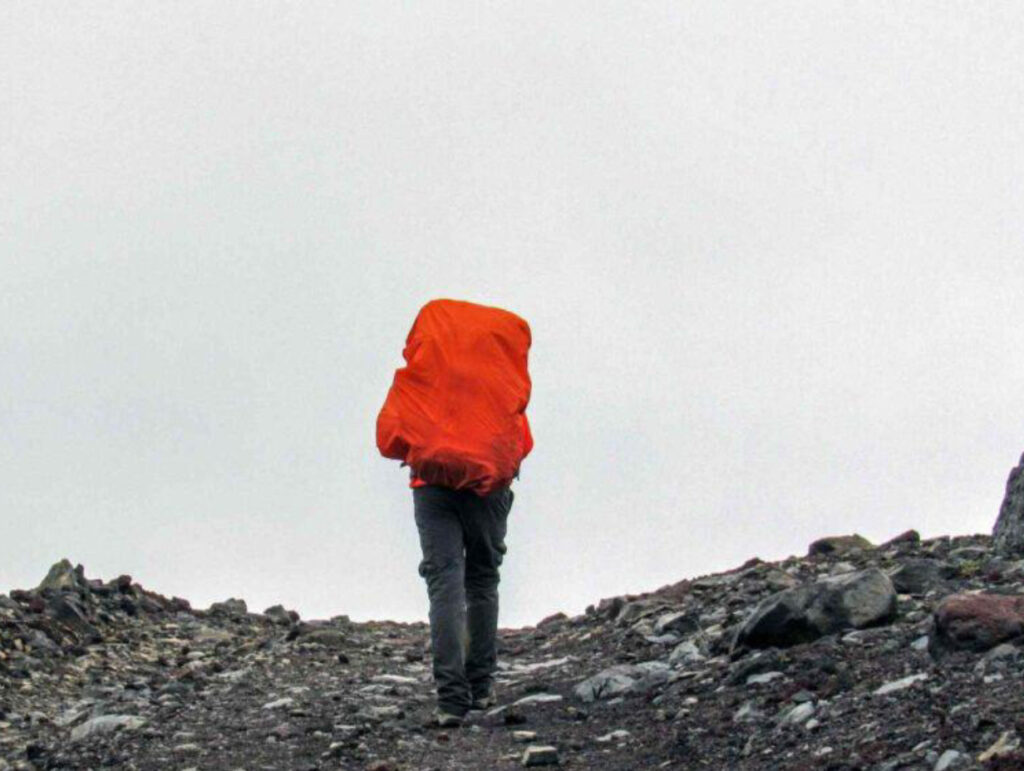The Ultimate Beginner’s Road Cycling Guide [2025 Edition]
Select the Perfect Road Bike for Your Cycling Adventures
Ready to start your road cycling journey? The first step is finding the perfect bike. But with so many options out there, where do you begin?
Road bikes come in three main categories: endurance, racing, and all-road.
Endurance bikes prioritise comfort with a more upright riding position and stable handling. They’re ideal for longer rides and rougher roads.
Racing bikes, also known as aero bikes, are all about speed. They have aggressive geometry for a more aerodynamic position. This makes them a top choice for competitive cyclists and those who love to pedal efficiently on flat terrain.
All-road bikes, sometimes called gravel bikes, are the most versatile of the bunch. With wider tyres and a more relaxed geometry, they’re designed to tackle any surface, from smooth pavement to gravel paths. They’re a great pick if you want to explore different types of riding.
When choosing your first road bike, focus on fit and comfort rather than fancy features. Visit a local bike shop to get professionally fitted. They’ll help you find the right frame size and adjust dial in your riding position.
Trust us, a well-fitted bike is a game-changer for comfort and efficiency.
As for budget, expect to spend at least £1,000 for a quality entry-level road bike. But don’t worry, you can find great deals on gently used bikes too. Just make sure to have them inspected by a professional mechanic before buying.
When I started cycling seriously in my late 40s, I was overwhelmed by all the bike options out there.
But then I remembered my days of mountain biking in my 20s, when I spent a year cycling down Africa with my brother. We had strong, reliable bikes that fitted us well and carried us through all sorts of terrain.
So when I walked into the bike shop, I focused on finding a road bike that felt comfortable and stable, just like my trusty mountain bike.
And you know what? It made all the difference in my riding enjoyment and confidence.
Gear Up with These Must-Have Cycling Essentials
Now that you’ve got your trusty steed, it’s time to gear up with some essential accessories.
Always wear a helmet that meets safety standards. Your brain is your most precious asset, so protect it at all costs!
Next up, invest in some quality cycling clothes.
A moisture-wicking jersey and padded cycling shorts or bib shorts will keep you comfortable on longer rides.
Don’t forget gloves to prevent hand numbness and improve grip. And of course, you’ll need a couple pairs of cycling socks in fun colours or patterns – because why not?
For your bike, consider adding a bottle cage or two to stay hydrated on the go.
One accessory that deserves a special mention is the humble water bottle. Staying hydrated is crucial for performance, safety, and enjoyment on the bike, especially on longer rides or in hot weather.
Always carry at least one water bottle on your bike, and consider investing in an insulated bottle to keep your drink cool.
If you’re riding for more than an hour, you may also want to add an electrolyte mix to your water to replace the salts and minerals lost through sweat.
And don’t forget to drink regularly, even if you don’t feel thirsty – by the time thirst kicks in, you may already be dehydrated.
A good rule of thumb is to take a few sips every 15–20 minutes, or more often if you’re riding hard or in hot conditions.
A small saddle bag is also handy for carrying a spare tube, tyre levers, and multi-tool in case of flats or mechanical issues.
Other nice-to-haves include cycling shoes that clip into your pedals for maximum power transfer; sunglasses to protect your eyes from wind and debris, and a cycling computer to track your speed, distance, and route.
Sure, all this gear can add up, but you don’t need everything at once. Start with the basics and gradually build your collection as you fall deeper in love with the sport.
Master These Simple Bike Maintenance Tasks and Repairs
Want to keep your bike running smoothly and avoid pricey shop repairs? Learn these basic maintenance tasks and thank yourself later.
First, get comfortable cleaning and lubricating your bike chain. A clean, well-oiled chain is key to shifting performance and longevity. Use a degreaser to remove built-up gunk, then apply a quality lubricant every few rides or after riding in wet conditions.
Next, master the art of fixing a flat. Trust us, it’s not if but when you’ll get one.
Always carry a spare tube, tyre levers, and a mini pump or CO2 inflator. Practice removing your wheel, replacing the tube, and putting everything back together at home so you’re ready when the inevitable happens.
Also, check your tyre pressure before every ride using a floor pump with a pressure gauge. Properly inflated tyres roll faster, prevent flats, and improve handling. Refer to the recommended pressure range printed on your tyre sidewalls.
Lastly, get in the habit of giving your bike a quick once-over before each ride. Squeeze the brakes to ensure they’re working properly. Give the wheels a spin to check for rubbing or wobbling. And make sure there are no loose bolts or cracks in the frame.
If anything seems off, don’t hesitate to take your bike to a professional mechanic for a tune-up. They can catch and fix small issues before they turn into big problems that could ruin your ride or your wallet.
Ride Safe and Smart: Essential Cycling Safety Tips
Cycling is an amazing way to improve your fitness, explore the outdoors, and have fun. But as with any sport, safety should always come first. Here are some essential tips to keep you safe on the road.
Always follow traffic laws and ride predictably. That means stopping at red lights and stop signs, signalling turns, and riding in a straight line rather than weaving in and out of traffic.
Remember, you have the same rights and responsibilities as motorists.
Next, make yourself visible to drivers, especially in low-light conditions. Wear bright, reflective clothing and use front and rear lights on your bike.
Also, be aware of your surroundings and anticipate potential hazards like potholes, gravel, or car doors opening.
Speaking of riding with others, let’s talk about group road ride etiquette.
When you’re cycling with a group, it’s important to communicate clearly and ride predictably. Use hand signals to indicate turns, obstacles, or changes in pace, and call out “car back” when a vehicle is approaching from behind.
It’s also good form to take turns at the front of the group, a position known as “pulling.” This allows everyone to share the work of cutting through the wind and helps maintain a steady pace.
If you’re new to group riding, don’t be afraid to ask questions or let others know your comfort level. Most cyclists are happy to offer guidance and support, because we were all beginners once.
Also, avoid overlapping wheels with other cyclists, as this can cause crashes if someone suddenly brakes or swerves.
Lastly, always wear a helmet that fits properly and meets safety standards. It could literally save your life in a crash. And don’t forget to replace your helmet every few years or after a significant impact.
By following these safety tips and using common sense, you can minimise risks and enjoy riding with confidence. Remember, the goal is to have fun and make it home safely after every ride.
Sidestep These Typical Beginner Cycling Pitfalls
As a new cyclist, it’s easy to make mistakes that can lead to frustration, discomfort, or even injury. Here are some common pitfalls to avoid as you start your cycling journey.
One of the biggest mistakes beginners make is buying a bike that doesn’t fit properly.
A poorly fitted bike can cause pain in your neck, shoulders, back, or knees, and make riding feel inefficient and awkward. That’s why it’s so important to get a professional bike fit before you buy.
Another common error isn’t learning how to shift gears efficiently. Many beginners tend to stay in one gear, pedalling furiously on flats and struggling on hills. But using your full range of gears can make riding feel smoother and more enjoyable.
As a rule, aim for a pedalling speed of around 80–90 revolutions per minute. When you start to have trouble, switch to an easier gear.
Beginners also often neglect basic bike maintenance, like keeping tyres inflated and the chain lubed. These simple tasks can prevent flats, improve efficiency, and extend the life of your parts. Get in the habit of checking your tire pressure and cleaning and lubricating your chain regularly.
Finally, many new cyclists make the mistake of doing too much too soon. They get excited and jump into long, hard rides without building up gradually. But this can lead to burnout, fatigue, and even overuse injuries.
Start with shorter, easier rides and slowly increase your distance and intensity over time. And always listen to your body – if something hurts or feels off, back off and rest.
By being aware of these common mistakes and taking steps to avoid them, you’ll set yourself up for success and enjoyment on the bike.
Plan Exciting Rides on the Perfect Routes for Beginners
One of the joys of cycling is exploring new places and discovering scenic routes. But as a beginner, it can be daunting to plan rides that are safe, enjoyable, and within your abilities. Here are some tips for choosing the perfect route.
First, start with shorter, flatter routes and gradually build up to longer, hillier ones as your fitness improves. Look for dedicated bike paths, quiet side streets, or roads with wide shoulders and low traffic.
Use online tools like Google Maps or apps such as Strava to find popular cycling routes in your area. Many of these apps have user-generated content, so you can see photos, read reviews, and check the elevation profile before you ride.
Also, consider joining a local cycling club or group ride. Many clubs offer beginner-friendly rides led by experienced cyclists who know the best routes. Riding with others is a great way to discover new places, learn from more experienced riders, and make friends who share your love of cycling.
When planning your own routes, be sure to consider factors like weather, wind direction, and time of day. Avoid riding during rush-hour traffic or in extreme temperatures if possible. And always let someone know where you’re going and when you expect to be back, just in case.
Finally, don’t be afraid to get creative with your route planning. Look for interesting destinations like parks, cafes, or scenic viewpoints to make your rides more fun and rewarding.
And remember, there’s no shame in turning around or cutting a ride short if you’re not feeling up to it. The goal is to enjoy the journey, not just reach a destination.
When you’re first starting out with bike rides, it’s important to set realistic goals and celebrate the small victories.
Remember, every ride is an opportunity to explore, learn, and grow. Maybe your first goal is to ride 5 miles without stopping, or to tackle that short but steep hill in your neighbourhood.
Whatever it is, embrace the challenge and enjoy the process.
As you gain confidence and fitness, you can start setting your sights on longer, more challenging rides.
But always listen to your body and don’t be afraid to take breaks or turn back if needed. The beauty of cycling is that there’s no one-size-fits-all approach. You get to decide what kind of rider you want to be and what kind of bike ride brings you joy.
So start riding, and let the journey unfold.
Boost Your Cycling Stamina and Fitness with These Strategies
Whether you’re cycling for fun, fitness, or competition, improving your endurance and stamina is key to reaching your goals. Here are some effective strategies to help you ride stronger and longer.
First, focus on consistency over intensity. Aim to ride at least three times a week, even if some rides are shorter or easier than others. Regular riding will help build your aerobic fitness and muscular endurance over time.
Next, gradually increase your mileage and duration over the course of a few weeks or months. A good rule of thumb is to add no more than 10% per week to avoid overtraining or injury.
So if you’re currently riding 20 miles per week, aim for 22 miles next week, then 24 the following week, and so on.
To boost your power and speed, incorporate some interval training into your rides. This means alternating between short bursts of high-intensity riding and longer periods of recovery.
For example, you might ride hard for 1 minute, then ease off for 4 minutes, and repeat this cycle several times. Interval training can help improve your VO2 max (the maximum amount of oxygen your body can use during exercise) and make you a stronger, more efficient rider.
Don’t forget to fuel your rides properly with adequate hydration and nutrition. Drink water or an electrolyte drink before, during, and after your rides, especially in hot weather.
And consume carbohydrate-rich foods like bananas, energy bars, or gels during longer rides to maintain your energy levels.
Finally, make recovery a priority. Give yourself at least one or two rest days per week to allow your body to recover and adapt to your training.
Get plenty of sleep, eat a balanced diet, and consider incorporating stretching or foam-rolling into your routine to improve flexibility and reduce muscle soreness.
Remember, improving cycling fitness is a gradual process that requires patience, consistency, and listening to your body. Celebrate your progress along the way and enjoy the journey of becoming a stronger, more confident rider.
I know firsthand how cycling can transform your fitness and endurance.
When I was cycle commuting 15 miles each way from my home near Oxford to work, I built up a solid base of stamina. Sure, there were days when I opted for the train, especially when the weather was miserable.
But consistently riding those miles paid off in spades. So even if you’re not ready to tackle a long commute, know that every mile you put in is contributing to a stronger, fitter you.
Enhance Recovery and Prevent Injury with These Stretching Techniques
As a cyclist, you put your body through a lot of repetitive motion and strain, especially in your legs, hips, and lower back. Over time, this can lead to muscle tightness, imbalances, and even overuse injuries if you don’t take steps to recover properly. That’s where stretching comes in.
Incorporating a regular stretching routine into your cycling practice can help improve flexibility, reduce muscle soreness, and prevent injuries. Here are some simple stretches that target key cycling muscles.
First, stretch your quadriceps (the muscles on the front of your thighs) by standing on one leg and pulling your foot toward your buttock. Hold for 15-30 seconds, then switch sides. You should feel a stretch along the front of your thigh.
Next, target your hamstrings (the muscles on the back of your thighs) by sitting on the ground with one leg extended and the other bent. Reach toward your toes until you feel a stretch behind your knee and thigh. Hold for 15-30 seconds, then switch legs.
To stretch your hip flexors, kneel on one knee with the other foot forward. Lean forward until you feel a stretch along the front of your hip and thigh. Hold for 15-30 seconds, then switch sides.
Finally, don’t forget your upper body. Clasp your hands behind your back and lift your arms up and away from your body to stretch your chest and shoulders. You can also gently twist your torso from side to side to loosen up your spine and ease tension in your back.
In addition to stretching, be sure to give your body time to recover between rides. Get enough sleep, drink water, and eat a healthy diet with enough protein and carbs to help your muscles recover and have energy.
If you’re feeling especially tired or sore, think about taking a day off or doing a light exercise like swimming or yoga instead of cycling. Your body will thank you in the long run.
Join the Vibrant Cycling Community and Find Your Riding Tribe
Cycling may seem like a solo sport, but there’s a thriving community of riders out there waiting to welcome you with open arms. Connecting with other cyclists can make your riding experience more fun, social, and rewarding. Here are some ways to get involved.
First, consider joining a local cycling club or group. Many cities and towns have clubs that cater to different skill levels and interests, from casual weekend rides to competitive racing teams.
Joining a club is a great way to meet other cyclists, discover new routes, and learn from more experienced riders. Plus, most clubs offer perks like discounts at local bike shops or organised social events.
If you’re not ready to commit to a club, look for local group rides or events that welcome beginners. Many bike shops or community organisations host weekly rides that are open to all.
These rides are usually by pace and distance, so you can choose one that fits your ability level. Riding with a group can help you push yourself, stay motivated, and feel more confident on the road.
Another way to connect with other cyclists is through online forums, social media groups, or apps such as Strava.
These platforms allow you to share your rides, photos, and experiences with a global community of cyclists. You can ask for advice, give, and receive kudos, and even participate in virtual challenges or competitions.
Finally, don’t be afraid to strike up conversations with other cyclists you meet on the road or at rest stops. Most riders are happy to chat about their bikes, gear, or favourite routes. You never know – you might just meet your new best riding buddy or discover a hidden gem of a trail.
Remember, cycling is more than just a way to get fit or explore new places. It’s also a way to connect with others who share your passion for two wheels. So don’t be shy – put yourself out there and join the vibrant, welcoming cycling community. Who knows where the road might take you?
Joining a local cycling group in my late 40s was a game-changer for me.
Not only did I lose a ton of weight and gain some lifelong friends, but I also discovered the joys of long-distance rides.
I still remember the sense of accomplishment I felt after completing a three-day, 135-mile ride from Newcastle upon Tyne to south Lincolnshire.
And then there was the time I conquered 65 hilly miles around the Peak District – talk about a challenge!
But you know what? I never would have attempted those rides without the support, camaraderie, and motivation of my cycling group.
So don’t underestimate the power of finding your tribe – it might just take you places you never imagined possible.
Embark on Your Road Cycling Adventure Today
You now have the knowledge and tools to start your exciting journey into the world of road cycling. But reading about it is just the beginning – the real magic happens when you hop on that bike and start pedalling.
Remember, every pro cyclist started exactly where you are now. They took that first nervous ride, felt the exhilaration of the wind in their faces, and never looked back. And now it’s your turn.
So what are you waiting for? Head to your local bike shop, get fitted for your perfect bike, and start exploring all the amazing places your two wheels can take you.
Trust us, once you experience the joy, freedom, and accomplishment of road cycling, you’ll wonder why you waited so long to start.
Let’s ride!















